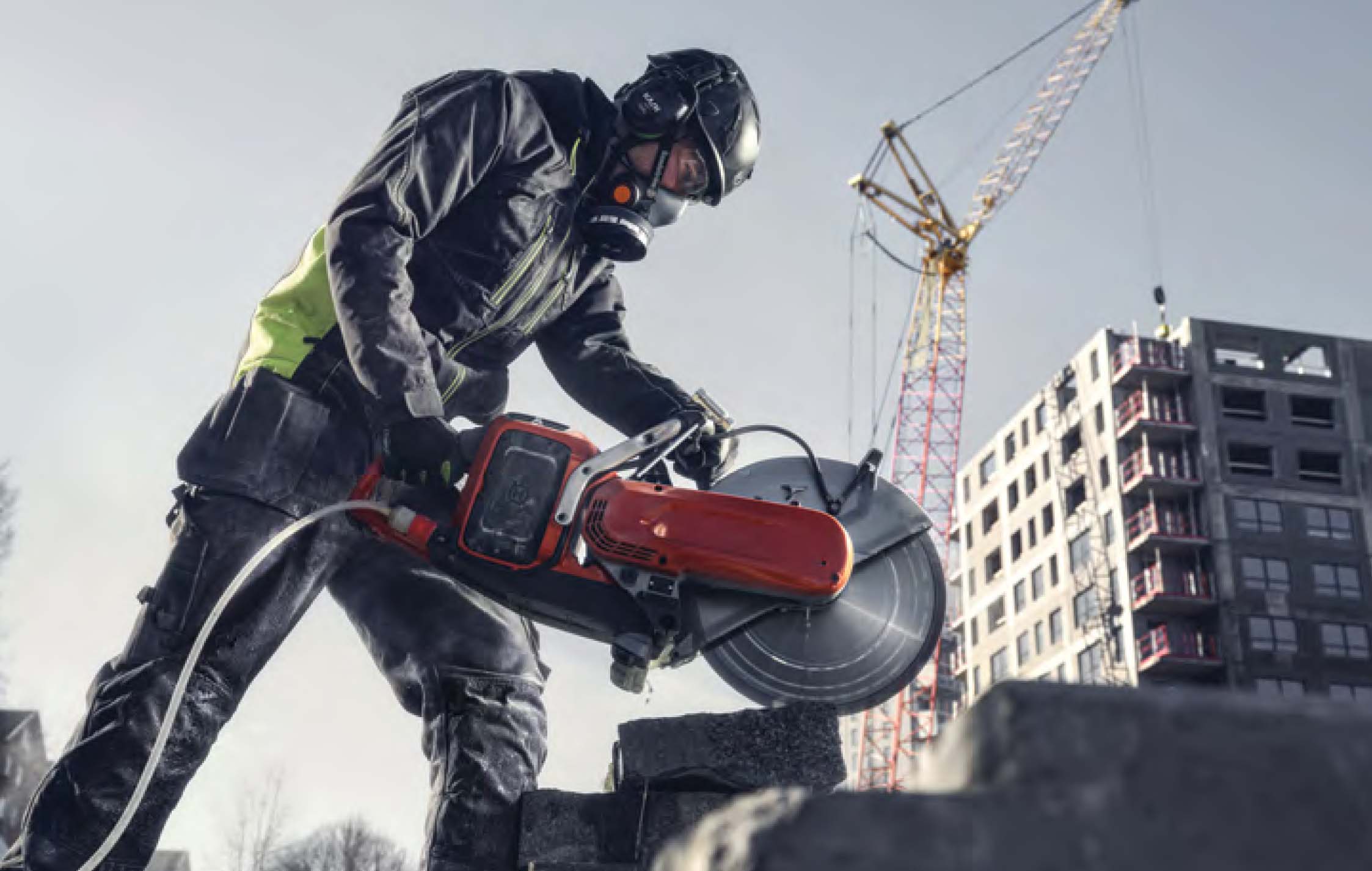
Battery Powered Tool Benefits

Innovation in battery-powered tools is one of the biggest trends in the construction industry. These tools are easier to maneuver around a jobsite, more convenient for quick jobs, easier to operate in some cases and of course, create a greener option for our health and environment. While battery-powered tools might not always eliminate the need for gas or corded electric powered equipment, there is definitely a growing place for these tools in a contractor’s fleet.
In this article, we will explore the benefits and drawbacks of battery powered tools in the light construction equipment space and why contractors should consider adding these tools to their fleet.
Positive ROI
One of the most beneficial factors of battery-powered tools is lower cost over time and lower maintenance that directly impacts profits and return on investment.
For example, a 94 volt battery powered cutter has three basic components: the battery, the saw and the blade. The battery, in essence, replaces the fuel tank, fuel filter, engine, carburetor, recoil rope and spark plug – all the normal service areas for wear and tear items on a gas-powered machine. This means over time, the saw will have a greater ROI as fewer parts and labor will be needed to keep the saw in good running condition.
Battery-powered tools do not need gas or oil, so immediately there is cost savings over the lifetime of the tool, as well as eliminating the potential for deferred filter maintenance or incorrect fuel mixture being used and causing damage to the engine components.
Battery-specific diamond tools
When using diamond tools with battery products, it is important to use a diamond tool that is specifically designed for the application. Battery-powered machines can respond differently to load conditions than gas machines. Using a diamond tool specifically engineered for the battery machine will minimize friction, reduce vibration, and optimize overall machine performance.
Applications for batteries
Remote job sites, or sites lacking utilities, can function at full capacity if using battery-powered equipment. The portability of battery powered hand tools offer increased mobility within the jobsite. This can reduce worker fatigue – as fewer additional items are needed to perform the task at hand. In addition, cordless tools reduce tripping hazards and are easier to store – maximizing storage space.
Indoor applications with minimal ventilation and confined outdoor spaces, like trenches, have increased the drive for battery tools. Mechanical contractors, fire departments, sprinkler installers, concrete paver contractors, demolition contractors, hardscape contractors, mason contractors, plumbers, electricians and HVAC specialists can optimize productivity with machines that emit zero-direct emissions, and easily start and stop for quick intermittent uses.
In addition, no matter where the site is, contractors can capitalize on the usage of batteries by charging them off-site, so they are ready to go when in the field. This increases productivity, and all an operator has to do is turn it on, perform the task and turn it off. Battery tools create less heat and emit zero-direct emissions. Allowing high volume work to continue in tight, or high-traffic work zones in or near public places during a neighboring business’ hours.
Battery tradeoffs
There are many advantages of battery-powered tools, but like all equipment, these tools are not without drawbacks. Batteries can be used for a variety of applications, in a variety of work environments, but they do require time to recharge. This is easy
to overcome with a little preplanning – contractors will need to determine how long a project will take and ensure they have enough batteries to complete the job, or plan charging time into the workday.
For decades, gas and electric powered tools have proven to be reliable sources on jobsites and will always have a place
on the construction site. These units are necessary for high powered and heavy-duty applications. Contractors may prefer the power of a gas or high frequency electric tool if they need to make continuous full-depth cuts throughout the day, or if larger tools are needed for a large project.
Ease of Use
Teaching workers how to run/operate a battery-powered tool verses a gas unit is less complicated. It is easier to train a new operator on how to start a battery machine. It requires less instruction and retention is greater. This is especially true for operators that do not have a lot of experience with gas- powered machines. Also, the batteries are often interchangeable with multiple tools.
In addition, battery-powered machines can offer improved safety. For example, safety features can be designed into the machine on a battery power cutter, because there are fewer forces in play on the machine compared to a gas version. Some saws even incorporate features to quickly stop a blade, reducing the risk of injury from a saw kickback.
Stay Connected
Some battery tools coming to the market now have Bluetooth connectivity, which can connect to a fleet tracking system. For battery products, sensors record data like runtime, service intervals, and if the battery is approaching an overheat situation. This smart technology helps keep equipment in top performing shape and reduces downtime.
In the end, it all comes down to the right tool for the project. Having different power options ready to go in your fleet, and thoroughly understanding a project’s need, can help you select the correct tool.
Husqvarna Construction is a market leader in equipment and diamond tools for the construction and stone industries. The battery product range includes the K1 PACE power cutter, K 535i power cutter, WT15i water tank and BLi battery series. For more information, please visit www.husqvarnacp.com.













